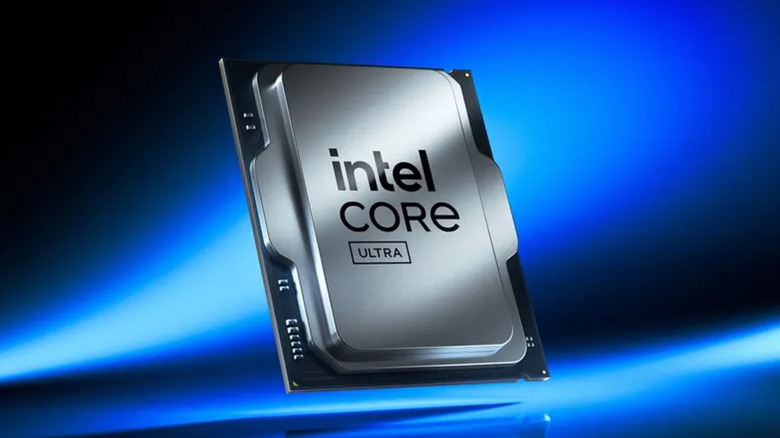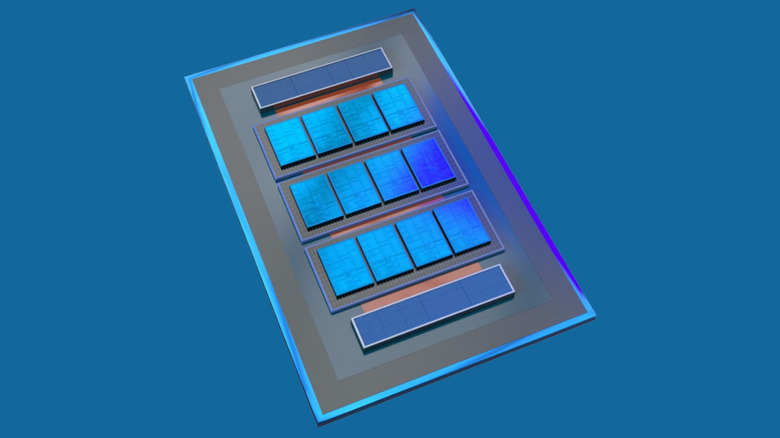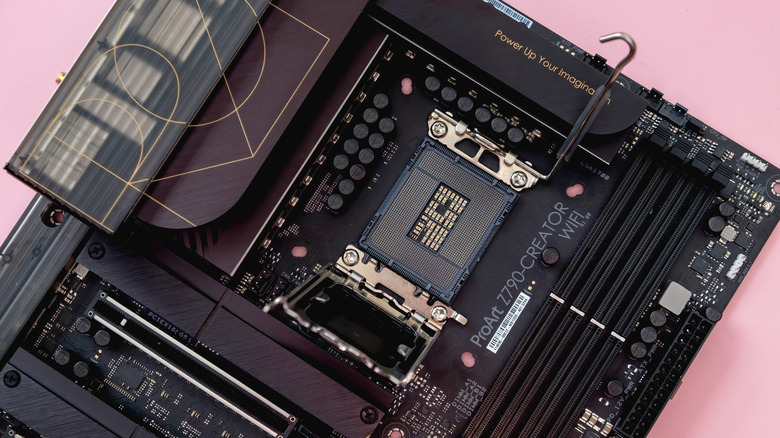The One Thing Intel Knows It Needs To Compete With AMD's X3D CPU Lineup
Intel was already on thin ice after the Raptor Lake instability issues, and its current Arrow Lake series hasn't exactly helped. Despite a new platform, higher clock speeds, and more cores, the latest Core Ultra 200-series CPUs have actually shown worse gaming performance than their predecessors. AMD, meanwhile, has continued to improve through its CPU generations, and gamers have taken notice. As of the July 2025 Steam Hardware Survey, AMD processors now power over 41% of user PCs. That rise is largely thanks to its X3D CPUs, which use larger (level 3) 3D V-Cache to reduce latency and deliver noticeably higher framerates in modern games. It's also the one area where Intel still has no real answer.
In 2024, Intel publicly confirmed it had no plans to bring 3D-stacked cache (similar to AMD) to its desktop chips anytime soon. But change may finally be coming. All eyes are now on Nova Lake, Intel's next generation of Core Ultra desktop CPUs, expected in late 2026. Rumors suggest it could introduce bLLC (Big Last-Level Cache), which is supposed to be Intel's new fighting chance to compete against AMD's X3D CPUs.
A rumored Arrow Lake refresh is reportedly coming before that, but since it's based on the current Arrow Lake architecture (LGA 1851) with some modest AI-powered updates, expectations are low. While nothing is confirmed yet, the concept itself isn't theoretical — Intel already uses a "Local Cache" tile beneath its ClearWater Forest Xeon CPUs, similar to AMD's under-core 3D V-cache, which is proof that an L3 cache-powered Intel gaming CPU is possible.
Intel Nova Lake specs show huge cache gains
Leaked specs suggest that when Intel finally brings its bLLC (big Last Level Cache) tech to its consumers in Nova Lake, it won't be on the flagship CPU. Unlike AMD's flagship Ryzen 9 9950X3D processor — which has both the highest core count and the most L3 cache — rumors indicate Intel's first BLLC CPUs will be two lower-tier Core Ultra models: one with eight performance cores and 16 efficiency cores, and another with eight P-cores and 12 E-cores. The Nova Lake Core Ultra 9 flagship with 16 P-cores, 32 E-cores, and four LPE-cores (totaling 52 cores) is not expected to have bLLC at launch.
8p, 16e
8p, 12eBoth 4lpe, bLLC, 125w https://t.co/EQo4MiaGpq
— Haze (@Haze2K1) June 17, 2025
To be fair, Intel's rumored cache plans sound impressive on paper. As VideoCardz suggests, the new Nova Lake CPUs are expected to have more than 200MB of L3 cache, which is significantly more than the 96MB found in AMD's Ryzen 7 9800 X3D and the 128MB found in AMD's 9950X3D. For reference, the current Arrow Lake flagship, the Core Ultra 9 285K, only has 36MB of Level 3 (Intel Smart) cache.
However, Intel's designs have been packing in more and more P-cores and E-cores with every generation — which leaves little room for extra cache on the CCD — and that raises two questions: where do you physically fit this much cache, and how do you keep it cool? We've already seen it happen with AMD. It took them two full CPU generations to fix the early clock speed deficits and high thermals of the 5800X3D and the 7800X3D before nailing it with the 9800X3D — and Nova Lake will (reportedly) be Intel's first attempt at bringing such technology to desktop gamers.
Intel Nova Lake may be bringing a new CPU socket
Intel's upcoming bLLC could give Nova Lake more L3 cache than any AMD X3D chip, but that cache still has to move data quickly between the CPU cores. That's another place where Intel's behind AMD. As PCGamer points out, AMD's X3D CPUs pair their stacked cache with a point-to-point mesh interconnect, delivering around 2.5 TB/s of bandwidth. Intel's ring bus design, by comparison, is older and maxes out at 512 GB/s — and that higher latency can blunt the gains of big cache. In simple words, if Intel's Nova Lake CPUs keep the same network topology, the chip could choke on its own data — meaning the bigger cache might not deliver all the gaming gains it promises.
Leaks also point to Intel switching to a new LGA 1954 socket for Nova Lake-S, meaning anyone upgrading will need a new motherboard after only two CPU generations' worth of support on LGA 1851 (assuming the Arrow Lake-S refresh arrives first). Then again, this is all still based on leaks and rumors — but if history is anything to go by, gamers won't be holding their breath.


